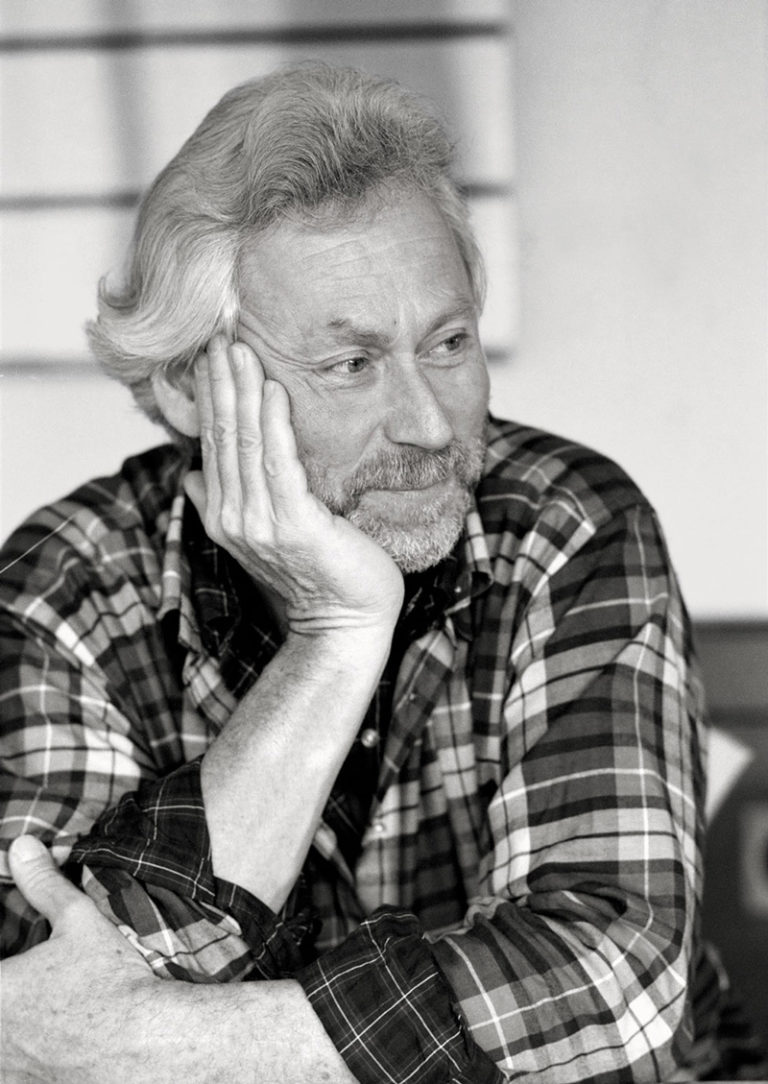
1928 - 1994
Donald Judd

description
Donald Judd was one of the most famous American abstract sculptors of the late 20th century, a designer and art theorist. He is the leading representative of Minimalism, although he himself never referred himself in this movement. Judd did not call himself a sculptor, believing that his art fundamentally does not fit the definition of sculpture since his works were not made by him personally but were made of ready-made objects.
Donald Judd described his creations as “a simple expression of complex thought” and composed them from industrial materials. A characteristic feature of the artist’s style is focusing not on the depicted object itself but on the space that he creates around himself. The most famous series of his works “Specific Objects” and the vertically placed “Racks” demonstrate his radical approach to modern sculpture, which fundamentally changes the very essence of this art form. Donald Judd explained his complicated abstract art in numerous theoretical works. He published a number of essays, as well as two volumes of the Complete Works in 1976 and 1986.
Since 1970, the artist began to create sculptural compositions for installation on open air. Few people know that the popular “loft” style of interior appeared largely thanks to Donald Judd. He was the first to convert an industrial building in New York into a living space and a studio, where he worked and exhibited his sculptures. Here he worked for 25 years, and after the artist’s death a museum was organized in the building, which not only demonstrates his creations but also allows visitors to understand the very essence and history of such an art movement as Minimalism.
Key ideas:
– Donald Judd began his career as a painter. Under the influence of representatives of Abstract Expressionism and Neoplasticism of Piet Mondrian, he created a number of abstract paintings, which he demonstrated at an exhibition in 1957. Gradually, the artist began to introduce more and more voluminous elements into his work, eventually moving to three-dimensional forms of art – sculpture and architecture.
– Sculptures of Donald Judd are interesting because the author did not use materials for their creation – bronze, wood or stone. He used the most unusual, most often industrial materials, such as concrete, aluminum, plywood and plexiglass, covering the details of works with a uniform colour. The sculptor tried to exclude the emotional component and any authorial influence from his works. For this purpose, the artist found such materials the most suitable for their purpose since their surface was not touched by the artist’s hand.
– The most famous works of Donald Judd are large hollow minimalist sculptures that have a shape of boxes arranged in repeating sequences and geometric combinations. The objects that the sculptor created do not exist by themselves. They belong to the environment, being its organic part. In one of his theoretical works, Donald Judd divided all of his sculptures into three types – “piles”, “boxes” and “progressions”. He worked with these forms for 30 years, starting in 1963.
– Donald Judd said that his works could not be truly called sculptures since they are not an image of an object, but only an expression of a certain thought or concept. According to the artist, his composition is “a simple expression of a complex idea”, and the form of this expression is irrelevant. Many works of the author, especially later ones, imply a demonstration of ready-made objects in unusual combinations or from an unusual angle. This approach allows critics to classify his work as installation, pop art and conceptual art.
– Unlike traditional sculptures, the works of Donald Judd have no pedestal or any base. They are located directly on the floor, allowing the viewer to get close to them and become part of the intended space. These compositions made from everyday household items are associated with everyday reality and consumer culture and make art accessible to ordinary people.
1928
1946
1948
1959
1957
1960
1964
1966
1968
1971
1984
1986
1994
Donald Judd was born in Missouri
Joined the US Army

He entered the College of William and Mary in Williamsburg

Worked as a critic of art

The first solo exhibition

Started to create abstract sculptural compositions

"Concrete objects"

The large solo exhibition

He bought the building of an abandoned iron factory

Moved to the small town of Martha

Started to design, developing furniture layouts

Founded the Chinati Foundation

The death

Donald Judd
On Artist
flow
Minimalism
Concept art
Neoplasticism
Pop Art
Abstract expressionism
Dada
friends
John Chamberlain
artists
Ed Reinhardt
Konstantin Brancusi
Dan Flavin
Barnett Newman
Kenneth Noland
Pete Mondrian
Mark Rothko
Marcel Duchamp
By Artist
flow
Minimalism
friends
Frank Stella
Ellsworth Kelly
artists
Damien Hirst
Jessica Stockholder
